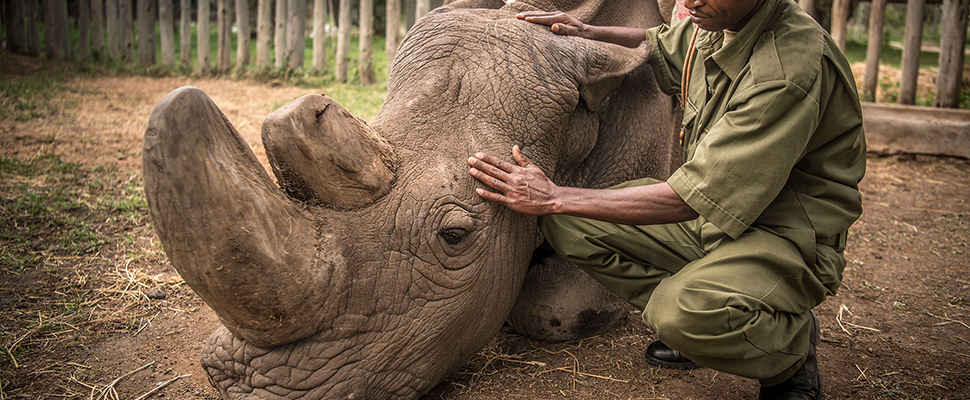The white rhinoceros became extinct, so what?
The recent extinction of the last male white rhinoceros has caused turmoil in social medial, but the danger of losing bees has been almost ignored

Leer en español: Se extinguió el rinoceronte blanco, ¿y qué?
The death of Sudan, the last remaining male white rhinoceros, shook the world. The 45-year-old animal lived in Ol Pejeta’s reserve in Kenya, Africa and had to be sacrificed due to health complications as consequence of its advanced age. After it’s death, there are only 2 females belonging to the same subspecies: it’s daughter and it’s granddaughter (Najin and Fatu).
According to the social networking sites of the natural park, in the 24 hours prior to Sudan’s death, it suffered from degenerative alterations in its muscles and was not able to move.
Despite the death of Sudan, it’s genetic material has been collected and will be used in the attempt to preserve the species. This represents a great loss in biodiversity issues since the unique characteristics of this subspecies will be lost in time.
However, the death of the rhino does not represent major environmental problem. First, because the intentions to save the white rhino are focused on techniques of fertilization with sperm that was recovered from Sudan and other dead rhinos, there’s still hope. Second, there is a genetically similar subspecie in the South of the continent; there are about 20 thousand specimens of this species, which, ones again, sheds some light on the posibility of bringing back these rhinos from the brink of extintion.
On the other hand, the extinction of this particular subspecies does not represent great damage to the habitat. These rhinoceros fed on grass and had almost no predators. Very different is the case of bees, which. with their death, will also end up killing thousands and millions of human beings and other species.
In one of those many phrases that are attributed to the German scientist Albert Einstein, he stated that “if bees disappeared from the planet, man would only have 4 years to live”.
The irresponsible use of agrochemicals has been reducing the population of bees in the world. Due to these pesticides, insects lose their orientation capacity and end up flying aimlessly until they die.
Additionally, fires, exogenous species, and habitat reduction have also affected the world population of bees.
Now that these insects are at risk of extinction and with their death, also a third of the food consumed by humans. In the United States alone, bee hives dropped from 5 million in 1988 to 2.5 million in 2015.
And yet our attention is only on rhinoceroses, polar bears and pandas, but we are not aware that these small animals are much more important to us and the planet.
This is because the bees, while searching for pollen in flowers, are also responsible for dispersing the seeds of these plants and thus help transporting them from flower to flower.
According to a study made by Stanford University, pollinating insects contribute about 10% of agricultural production worldwide. This would affect more to the regions of the world already punished by shortages and famines.
Latin American Post | Santiago Gómez Hernández
Translated from “Se extinguió el rinoceronte blanco, ¿y qué?”





